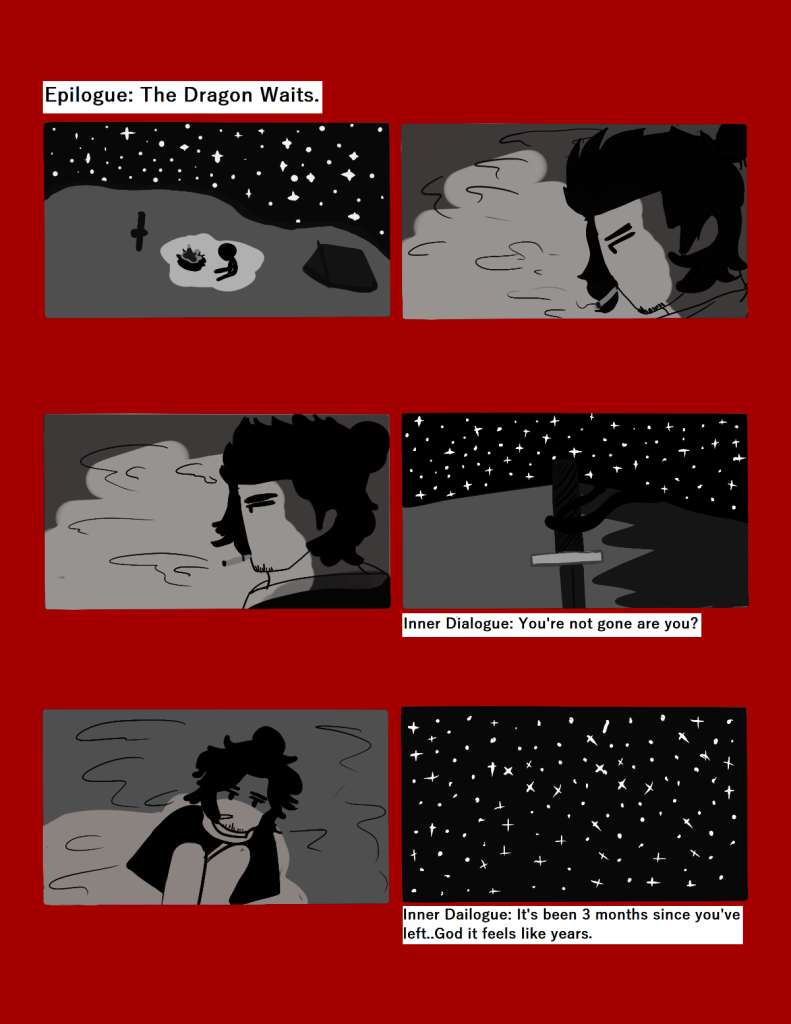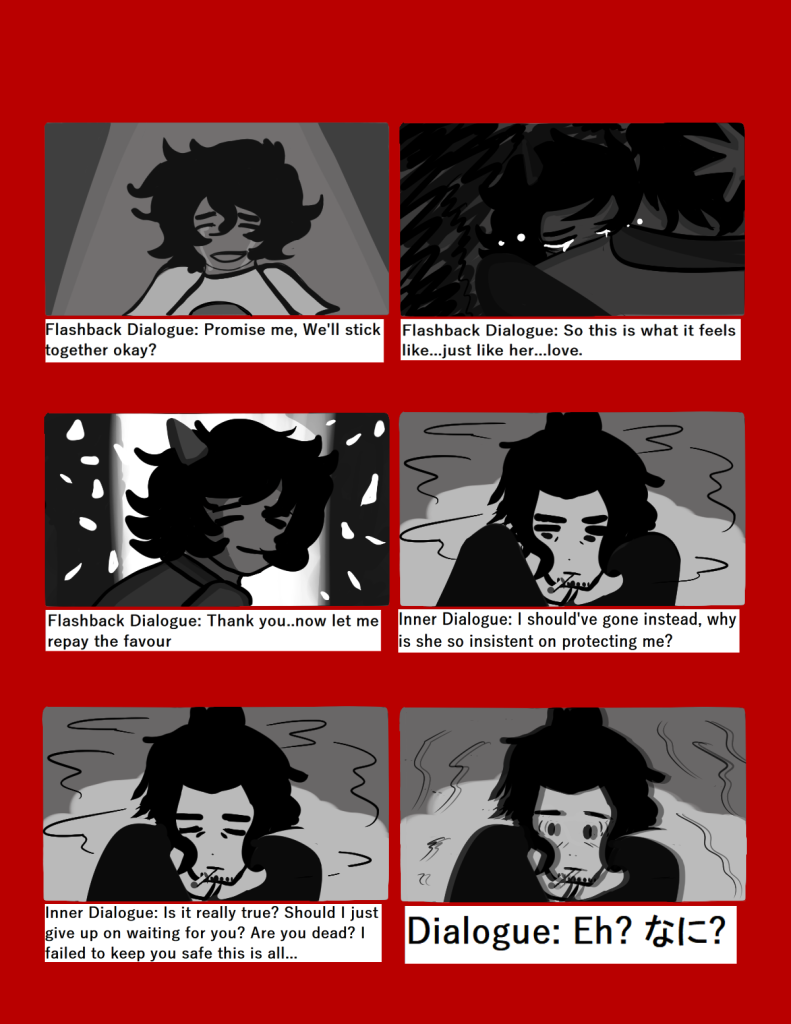I’m much more used to storyboarding for animation, storyboards often tell a story whether it be a flashback or a cutscene and so I wanted to create a storyboard of an emotional scene.
Before I started, I wanted to get an overall layout to how each scene is presented and how it transitions to the next scene, so I started off with an establishment shot to show where the character was. Since storyboards are meant to show the basis of the scene (rather than any details) I created rough sketches for each scene, not worrying too much about porportions.

I created two pages for this rough sketch with different shots, I wanted each shot to express a certain emotion to them therefore without any dialogue, the viewer can still determine the tone of the scene through facial expressions and body language.
For this cutscene, whilst expressing the tone through visuals was ideal, I also wanted to cover some context behind the scene, therefore I added a flashback for viewers to understand what happened prior to the present.
Once I finished the rough planning, I started working on the digital version, again still keeping the details of anatomy to a minimum. I used a monochrome colour palette since lots of storyboards in the animation industry primarily use it to get an idea on the scenes structure and how it’ll play out therefore using a simplified colour scheme saves time when creating longer storyboards.
I laid out the storyboard as if it was a comic, although to make the structure more coherent I could’ve added numbers or switched to a horizontal layout like my original sketches.
For further improvements, for the flashbacks, I could’ve added a static effect to visually indicate to the viewer that it is a flashback. Another improvement I could’ve also added was the inclusion of transitions between the flashback and present scenes: this could’ve also helped indicate the flashbacks further.
I’ve also learnt that storyboards also had more notes that would not only indicate dialogue but also what type of shot it was and further background on what the scene was about for animators that may not understand the context behind a scene. This addition will be useful for future game projects where story cutscenes are involved.
However, overall, the storyboard was clear and cohesive to outside / new viewers and I made sure that the storyboard ended off on a cliffhanger, much like an animated TV episode would.

